Oppo Find N3 review

A trio of top-tier selfie cameras on the back
The Find N3 has three cameras on its back - a 48MP primary, a 48MP ultrawide, and a 64MP telephoto camera for 3x optical zoom. These three can be used for selfies in the unfolded state, of course, but there's also a selfie camera in each display for good measure.

The primary camera on the Find N3 uses a LYT-T808 sensor, part of Sony's new LYTIA lineup, which benefits from the latest stacked architecture for improved light-gathering capabilities. It's reported as IMX 888 in hardware reading apps, and that's the one found in the Xperia 1 V and 5 V. It's nominally a 52MP imager. Here, it captures a 48MP effective resolution in a 4:3 aspect ratio. The lens has an equivalent focal length of 24mm and an f/1.7 aperture and features optical stabilization.
The ultrawide camera relies on a 48MP Sony IMX581 1/2.0" sensor with 0.8µm pixels. It is coupled with a 14mm f/2.2 lens. Autofocus is available, enabling exaggerated perspectives for nearby subjects as well as a macro mode.
The telephoto camera uses a high-res 64MP OmniVision OV64B 1/2.0" sensor with 0.7µm pixels. The focal length of the periscope lens is equivalent to 70mm, and the aperture is f/2.6.
The 32MP selfie camera inside the cover screen has an OmniVision OV32C 1/3.14" sensor with 0.7µm pixels and a Quad-Bayer filter. The lens has a 22mm focal length and an f/2.4 aperture, and the focus is fixed.
Finally, the inner selfie camera packs a 20MP 1/4" sensor with 0.7µm pixels and a Quad-Bayer filter. The fixed-focus lens has a 22mm focal length again, but the aperture is f/2.2.
Camera app and features
The Oppo/OnePlus-Hasselblad collaboration continues on the Find N3, and this means that the Swedish camera company has pitched in with some color science in Pro mode and whatnot. In other words, there is little beyond the badge itself.

The Hasselblad influence can be seen in the viewfinder of the camera app, with the orange accent color, but other than that, it's a camera app like any other.
The implementation for making use of the foldable form factor is also relatively familiar and straightforward. There are three small shortcuts around the upper left corner of the UI in tablet mode that enable the three main features.
The first button minimizes the camera viewfinder to one part of the screen, while the other half allows you to scroll, view and edit your recently shot images. This way, the camera stays ready if another moment worth capturing comes around.
The next one shows a preview on the cover screen - this way, your friends will see themselves while you are taking photos of them. And with the final one, you will be able to use the Cover screen as a primary viewfinder and take selfies with the rear cameras.
And before we close this chapter, we want to point out that you can use the Flex mode (the halfway opened position) for propping the phone on a flat surface like a tripod. If it's not windy, it's a great way to take timelapses and group photos with you in them.

Daylight photo quality
In broad daylight, the main camera captures pleasing images that won't leave you wanting. Detail levels are excellent, and things are rendered in a very natural and organic way, yet they look nicely crisp. Noise is normally nowhere to be seen.
When it comes to global properties, we're getting high contrast but also well-developed tonal extremes - perhaps other makers will squeeze out a bit wider dynamic range at the expense of contrast, but Oppo's take isn't really objectionable.
Similarly expressive is the color rendition - while the auto white balance is consistently dependable, saturation could perhaps be toned down a notch. Or, you know, you can learn to accept more color into your photos.
















Daylight samples, main camera (1x), 12MP
Given the right conditions, the full-res 48MP mode might be able to extract some more detail from a scene. In other instances, you may get more or extra noise, though. Colors don't quite have the same pop, either. Overall (and as usual), there's little point in shooting in this mode.








Daylight samples, main camera (1x), 48MP
The 2x zoom shots sourced from the main camera have good detail, and unless you specifically look up close and into random detail like foliage, you'd be quite pleased.








Daylight samples, main camera (2x)
The telephoto camera captures some of the best 3x shots we've seen. The detail looks natural, and there's plenty of it (these are 16MP images), while noise is essentially non-existent. Contrast is once again great, the dynamic range is nicely wide, and the colors are in tune with the main camera - a bit extra saturation, and it'd be too much.







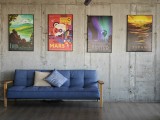
Daylight samples, telephoto camera (3x), 16MP
Here's how these scenes look when shot in the telephoto camera's nominal 64MP resolution. For the most part, we'd say we're not seeing any benefits; it's just the very first sample that looks to have some extra fine detail.

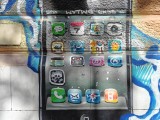

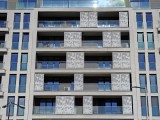



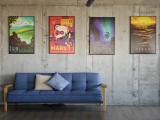
Daylight samples, telephoto camera (3x), 64MP
That sensor's true potential shines through in the 6x zoom mode, where the Find N3 delivers excellent photos. We'd probably find grounds to complain if it were a dedicated 6x module, but as it is, it's praise all along.


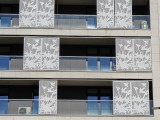
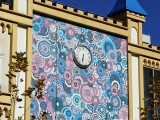

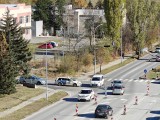

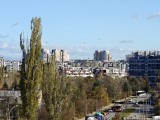
Daylight samples, telephoto camera (6x), 16MP
The ultrawide camera's coverage is pretty extreme, yet the phone manages to competently correct the distortion and still maintain some level of sharpness all the way to the corners. The default 12MP images capture great detail, though there's some noise to be seen - more readily than in the other two cameras' output.
Dynamic range gets more of a so-so mark from us - Oppo's high contrast approach to processing combined with the extra wide field of view means you'll often end up with underdeveloped tonal extremes. It's not that big of a deal, but it can be improved upon.















Daylight samples, ultrawide camera (0.6x), 12MP
We'd avoid the ultrawide camera's full-res mode entirely. The 48MP photos are upscaled from the 12MP ones and don't contain any extra detail - you just get a file size three times that of the regular images.








Daylight samples, ultrawide camera (0.6x), 48MP
In the shots above, there were already some 'regular' closeups to illustrate the usefulness of the ultrawide camera's autofocusing capability, but it goes beyond that. There's also the usual 'macro' mode that kicks in if you're on the main camera and get too close to a subject - so close that the main camera can't focus. The Find will then switch to the ultrawide and crop in to match the main camera's field of view.
The results are solid. Detail is plenty, and unless you look at the photos at 1:1, you likely won't suspect that they've been upscaled some.
Low-light photo quality
The Find N3's approach to low-light photography and Night Mode is similar to that of the iPhone and, by now, many others - there's an Auto Night Mode implementation with a moon icon that lights up in Hasselblad orange if the camera app decides for it to kick in or stays white if not. Tapping on the moon icon will enable/disable the Auto behavior. There is also a dedicated Night Mode in the More tab, which will get you essentially the same pictures as the Auto. The Auto is very eager to engage, by the way, unlike on the iPhone.
The main camera's results in the dark are truly excellent. Detail is great, while noise is minimal to non-existent. Dynamic range is very good, too, with reasonably well-contained point light sources, minimal haloing, and good development in the shadows. Mixed light sources left the auto-white balance unfazed, and color saturation was on point, too.















Low-light samples, main camera (1x), Auto Night Mode
If you choose to disable the Night Mode for some reason, you can expect to get your highlights blown, though not a lot else will suffer.












Low-light samples, main camera (1x), Night Mode off
The above notes on exposure and dynamic range remain true at 2x zoom, where you'll get decent but not great detail out of the main camera's efforts - it looks good from afar, not so much at 1:1.






Low-light samples, main camera (2x), Auto Night Mode






Low-light samples, main camera (2x), Night Mode off
At 3x zoom, the telephoto camera is doing a marvelous job, with only a single complaint from us - it consistently underexposes, and we'd be a lot happier if its shots were a stop brighter. And it's not like the highlights are close to clipping - it's just that the Oppo is being too overprotective of them. Other than that, we love the sharpness and detail, and the white balance and saturation are spot on, too.







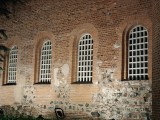
Low-light samples, telephoto camera (3x), Auto Night Mode
Interestingly enough, turning off Night Mode on the telephoto results in slightly brighter photos. The thing is, while that helps a little with the midtones, the highlights do get clipped when shooting this way. Overall, a bit of fine-tuning on the telephoto's Night Mode won't hurt, but in the meantime, some quick slider action will fix the exposure in post.




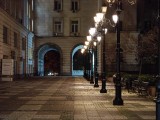


Low-light samples, telephoto camera (3x), Night Mode off
The telephoto maintains its composure at 6x as well. Detail won't be as pin-sharp on a pixel level, but overall these are very decent images. Again, a nudge of the exposure slider helps too.








Low-light samples, telephoto camera (6x), Auto Night Mode




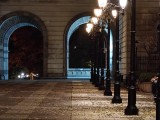
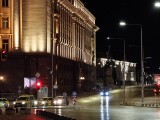
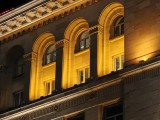
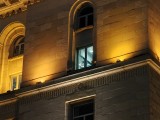
Low-light samples, telephoto camera (6x), Night Mode off
At the opposite end of the zoom range, we find the ultrawide camera, which isn't quite up to the same standard. Most annoying in its performance was the reddish cast we often got with some street lights - it wasn't a one-off, as you can see.
We'd firmly rely on Night Mode in this case (the Auto is good enough) to get the most out of the Find N3. It does a better job with detail in the shadows and midtones and is vastly superior with highlight preservation. Certainly not the best low-light ultrawide shots we've seen, but not truly bad either - it's just we were led to expect more.










Low-light samples, ultrawide camera (0.6x), Night Mode (Auto or forced)










Low-light samples, ultrawide camera (0.6x), Night Mode off
Once you're done with the real-world samples, head over to our Photo Compare tool to see how the Oppo Find N3 stacks up against the competition.


Oppo Find N3 against the One Plus Open and the Galaxy Z Fold5 in our Photo compare tool
Reader comments
- Mann
- 10 May 2024
- wHU
How to rectify folded double screen when opened only show one half screen.
- Darth Caesium
- 29 Apr 2024
- H5x
Just a quick, perhaps slightly dumb question, but since the ultrawide can do macro, does the software allow you to do macro selfies using the cover screen mode? If so, would you guys at GSMArena be willing to try macro selfies with foldables that sup...
- The Impaler
- 25 Dec 2023
- Ibx
You guys mention the pixel fold in this review but still haven't reviewed it. When will that be reviewed?












